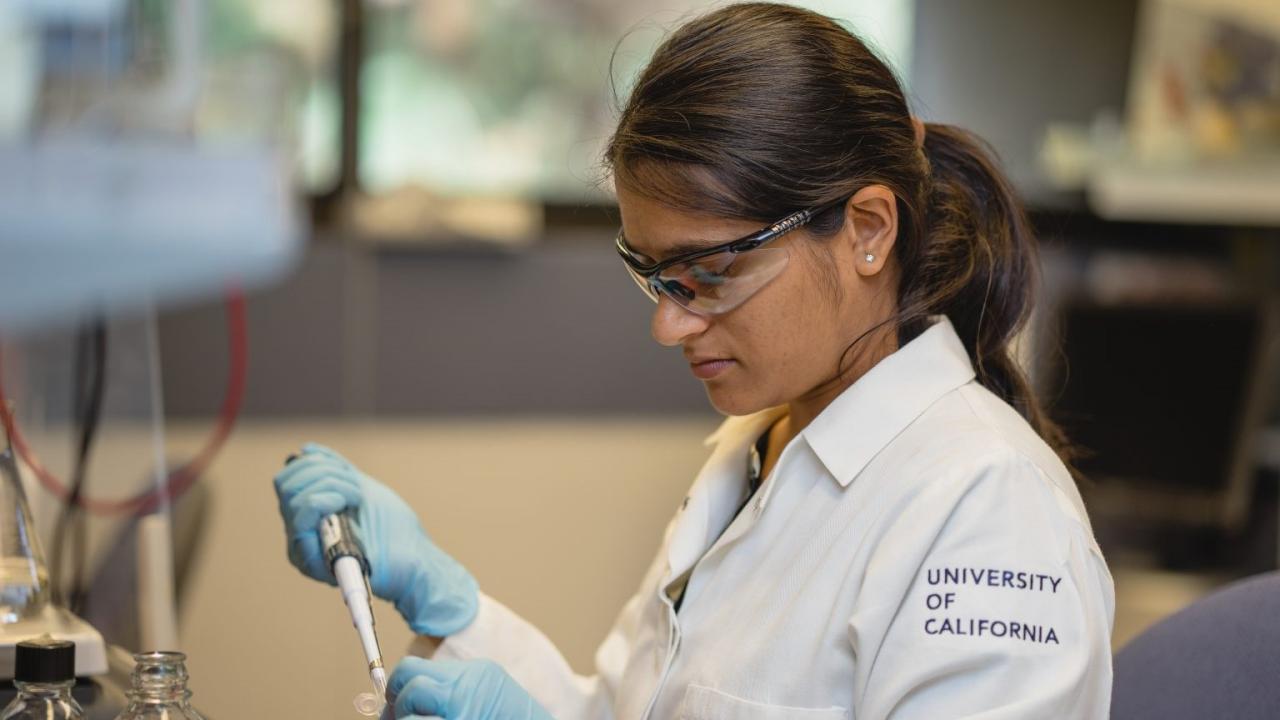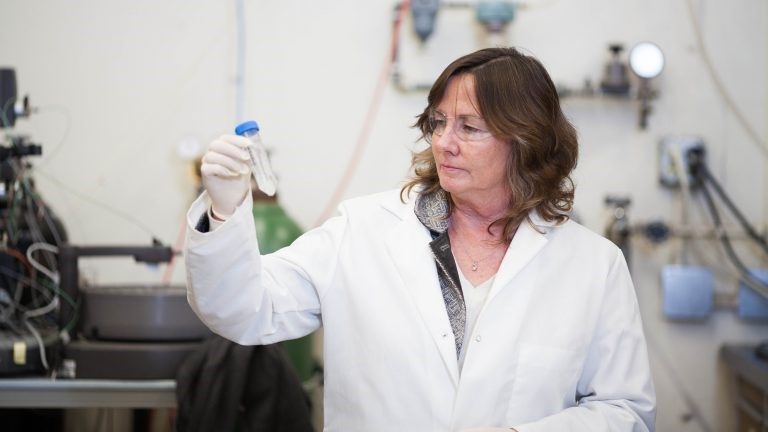
Going viral
Originally posted by UC Davis Engineering.
Though viruses are known for causing diseases like COVID-19, UC Davis chemical engineers Karen McDonald and Priya Shah think they can be as beneficial as they are destructive. From producing and purifying drugs for humans in space to inspiring new tools for biotechnology, viruses are being re-engineered to help humans who are suffering from injuries or diseases.
“Viruses can be nasty pathogens, but they can also be incredibly useful tools,” said Shah. “We can’t forget about them when they’re no longer causing a major disease, because there are extremely valuable things we can learn from them.”
Viruses are simply a string of genes protected by a protein coating that replicates when they interact with living host cells. Though they’re known for causing disease, viruses are best at using their host to replicate themselves, making them ideal models for researchers who want to quickly make a lot of a product using biology.
“Viruses are really good at controlling cells and making them do what they want to do, which is produce more virus,” said McDonald. “We use their replication machinery because they’ve evolved to be really efficient protein factories in hosts.”
Making drugs in plants
McDonald’s team uses this capability to produce human drugs in plants using plant viruses. Plants inherently have all the parts to make these therapeutic proteins, but they’re essentially missing the instructions. The team takes plant viruses—which don’t cause disease in humans—and replace the plant disease-causing viral proteins with their own gene sequence of instructions. The modified virus then quickly infects their plants, which receive the instructions to produce human drugs.
“We use the ability of a plant virus to make many copies of its genome to quickly amplify the amount of the therapeutic protein that we’re trying to make,” said McDonald. “The plant cells do all of the heavy lifting. They’re going to be doing transcription and translation of those instructions to make the protein.”
Next, the therapeutic protein must be extracted from the plant matrix and purified—an important step in preparing the drug for use. That’s where the lab’s Ph.D. student and NASA Space Technology Research Fellow Matt McNulty comes in. He is developing plant viruses as not only protein factories, but also functional nanomaterials that can purify the protein. He introduces a small genetic insertion to a second plant virus to get it to selectively bind to the therapeutic protein that’s being made in the plant. This new complex is easier to filter out from the rest of the plant matter in a centrifuge.
He’s also engineering the virus to uncouple from the protein in a different liquid, giving the team both a usable, purified drug and leftover plant virus that can be reused after a second round in the centrifuge. It’s a fast and inexpensive process that makes it easy to modify or multiply the virus.
“If you need more of these plant viruses, you can go rub them on a plant, wait a week and grind that plant up and you have a very simply regenerable source of purification tools,” said McNulty. “And if you need a different set of tools, you make a little genetic change to that virus, rub it on a plant again and in 24 hours, you’ve generated a whole new set of tools.”

Controlling Cell Processes
Assistant professor Priya Shah’s group looks at mammalian flaviviruses to understand how they control cell processes and imitate that with their own tools for biotechnology production.
The group’s focus is autophagy, a multi-step cellular process that recycles unused proteins and organelles into new proteins, organelles and energy, as well as breaks down viruses during an infection. Flaviviruses, like dengue and Zika virus, are unique because they not only resist this process, but also hijack it.
“These viruses have found a way to flip the system on its head,” said Shah. “Instead of inhibiting this antimicrobial and antiviral pathway, the virus uses it to promote virus replication.”
Shah and her lab study the different stages of autophagy and measure material flow to see how exactly the virus affects the process. Their goal is to figure out what changes the virus makes to which parts of the pathway to take over the system and use or imitate that for their own purposes.
“This is a fundamental biology question, but we are looking at it from a chemical engineering perspective of quantifying the rates of chemical reactions that occur and how they change under different conditions,” she said. “If we understand how exactly the virus manipulates the system, we would be able to potentially precisely disrupt it.”
Disrupting or controlling autophagy is important for biotechnology, where large reactors contain millions of cells that are used to make proteins and antibodies to treat and diagnose diseases like cancer. If researchers can regulate the process like flaviviruses, they can make the entire system more efficient.
Viruses as a Solution
Both labs aim to take their virus research in new directions to help humanity face the challenges of the 21st century.
McDonald’s lab is focused on human health in space. A new project funded by the Translational Research Institute for Space Health (TRISH) aims to use plant viruses in lettuce to produce and purify three therapeutics in 24 hours for astronauts on deep space missions. With success of several FDA-approved drugs made in plants, they see this as both a challenge and an extension of the work that’s already been done.
“We’re really excited about this project,” said McDonald. “There’s a lot of fundamental breakthroughs that can come out of it and these platform technologies will be valuable here on earth, as well as in space.”
For Shah’s lab, the impact is more immediate, as bioreactors will be vital to producing COVID-19 proteins that are needed to refine serological tests to test the population for immunity. Their studies on flaviviruses will shed light on new ways to produce enough proteins to properly test these new tools to, ironically, combat a virus.
“Viruses have had millions of years and millions of chances to evolve and try out different solutions, essentially, so if we look at how they are able to evolve these mechanisms, then I think we’ll be more successful,” said Shah.
